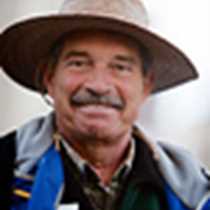Rio Tinto and Punta Sal, Honduras
There are few rivers in the world where one can move slowly upstream and see 54 species of birds – and this in only two hours of the morning! With recent rains, many trees are already flowering, among them the coral bean tree. This magnificent legume is covered in peach-colored blossoms. The most noticeable bird we found was the Montezuma oropendola, a large member of the blackbird family, chestnut in colour but with bizarre facial patterns and a brilliant yellow tail. These birds were perforating the flowers to get to the nectar. They were also singing continuously near their nests and, while doing so, each male would drop over the branch, swinging like a pendulum.
Kayaking was the other exciting activity of the morning. Those who paddled this quiet river enjoyed solitude and close looks at many tropical plants, insects and birds along the river’s edge.
Our first “taste” of the warm Caribbean water came early in the afternoon from a tiny secluded beach on the north coast of this country. Honduras is famous for its banana and textile production. Eerie bellows reverberated from the dense forest to our beach retreat, inciting us to explore for their origin. It took some time of quiet searching, but movements in the branches and palm fronds high in the canopy eventually revealed a troop of mantled howler monkeys. Delightful entertainment! These fifteen-pound vegetarians feed in the canopy at all times, eating mainly leaves of various trees as well as flower buds and fruit. Most of their day is spent in rest and sleep as they lie secured to a branch with their long fingers, toes and prehensile tail. Digestion of their leafy food is slow, as the quality of their diet is marginal.
The skies cleared, the winds died, and we enjoyed an evening beach fire and an exploration of the heavenly bodies above us. A perfect night in the tropics.
There are few rivers in the world where one can move slowly upstream and see 54 species of birds – and this in only two hours of the morning! With recent rains, many trees are already flowering, among them the coral bean tree. This magnificent legume is covered in peach-colored blossoms. The most noticeable bird we found was the Montezuma oropendola, a large member of the blackbird family, chestnut in colour but with bizarre facial patterns and a brilliant yellow tail. These birds were perforating the flowers to get to the nectar. They were also singing continuously near their nests and, while doing so, each male would drop over the branch, swinging like a pendulum.
Kayaking was the other exciting activity of the morning. Those who paddled this quiet river enjoyed solitude and close looks at many tropical plants, insects and birds along the river’s edge.
Our first “taste” of the warm Caribbean water came early in the afternoon from a tiny secluded beach on the north coast of this country. Honduras is famous for its banana and textile production. Eerie bellows reverberated from the dense forest to our beach retreat, inciting us to explore for their origin. It took some time of quiet searching, but movements in the branches and palm fronds high in the canopy eventually revealed a troop of mantled howler monkeys. Delightful entertainment! These fifteen-pound vegetarians feed in the canopy at all times, eating mainly leaves of various trees as well as flower buds and fruit. Most of their day is spent in rest and sleep as they lie secured to a branch with their long fingers, toes and prehensile tail. Digestion of their leafy food is slow, as the quality of their diet is marginal.
The skies cleared, the winds died, and we enjoyed an evening beach fire and an exploration of the heavenly bodies above us. A perfect night in the tropics.




